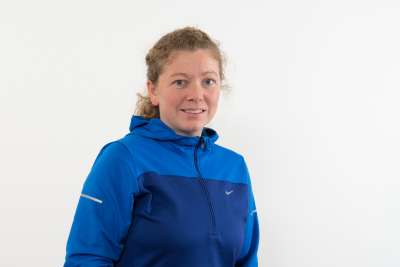Norwegian potatoes all year round

Photo: Morten Günther
Optimal storage involves temperature, lighting, humidity and air quality. Researcher Pia Heltoft Thomsen is heading up two major projects that will contribute to a better quality potato, better finances and less food waste. The aim is to guarantee the industry access to good, Norwegian potatoes throughout the year.
Good year-round potato quality requires the potatoes that arrive for storage to be of good quality. This requires careful collection that reduces the risk of damage, and that the harvesting takes places in dry and breezy weather, and not when it is too cold.
The first weeks in storage are important. The potatoes must dry out and blemishes and damage must cure. It is then important that the temperature is lowered gradually. Drying and curing requires a temperature of approx. 12 degrees and good ventilation to remove excess heat, water and CO2. How quickly potatoes need to be cooled depends on what they will be used for. Potatoes for cooking which must have a nice skin, should be dried and cooled quickly to avoid silver scurf and black spots.
Potatoes for crisps must not be stored below 7 degrees. This is to prevent the starch being converted into sugar. Too much sugar content can result in carcinogenic acrylamide in crisps and chips. On the other hand, potatoes for cooking can be stored at approx. 4 degrees. The low temperature provides a longer shelf life and prevents sprouting. However, when storing below 3–4 degrees the potato can take on a slightly sweet taste. Because potatoes used for deep frying must not be stored too cold, it can be difficult to prevent them from sprouting.
In the Antigro project, researchers are testing various anti-sprouting agents, including mint oils. They see good effects from the new agents on the market, but it is important to learn how to use them correctly. Under Norwegian conditions we need fewer treatments and lower doses than other countries in Europe.
Contacts

Pia Heltoft Thomsen
Research Scientist
-
Division of Food Production and Society
(+47) 920 80 939 pia.heltoft@nibio.no Office Location: Apelsvoll
Purpose
Secure the potato industry’s access to good, Norwegian potatoes throughout the year.
Collaboration: HOFF SA, Maarud AS, Orkla/KiMs, Findus, PTG, Inagro, Dormfresh, Nordisk Alkali, Biocontrol Andermatt, UPL and potato producers
Funding: “Forskningsmidlene for jordbruk og matindustri” [Research funds for agriculture and the food industry] + industry
Contacts

Pia Heltoft Thomsen
Research Scientist
-
Division of Food Production and Society
(+47) 920 80 939 pia.heltoft@nibio.no Office Location: Apelsvoll
